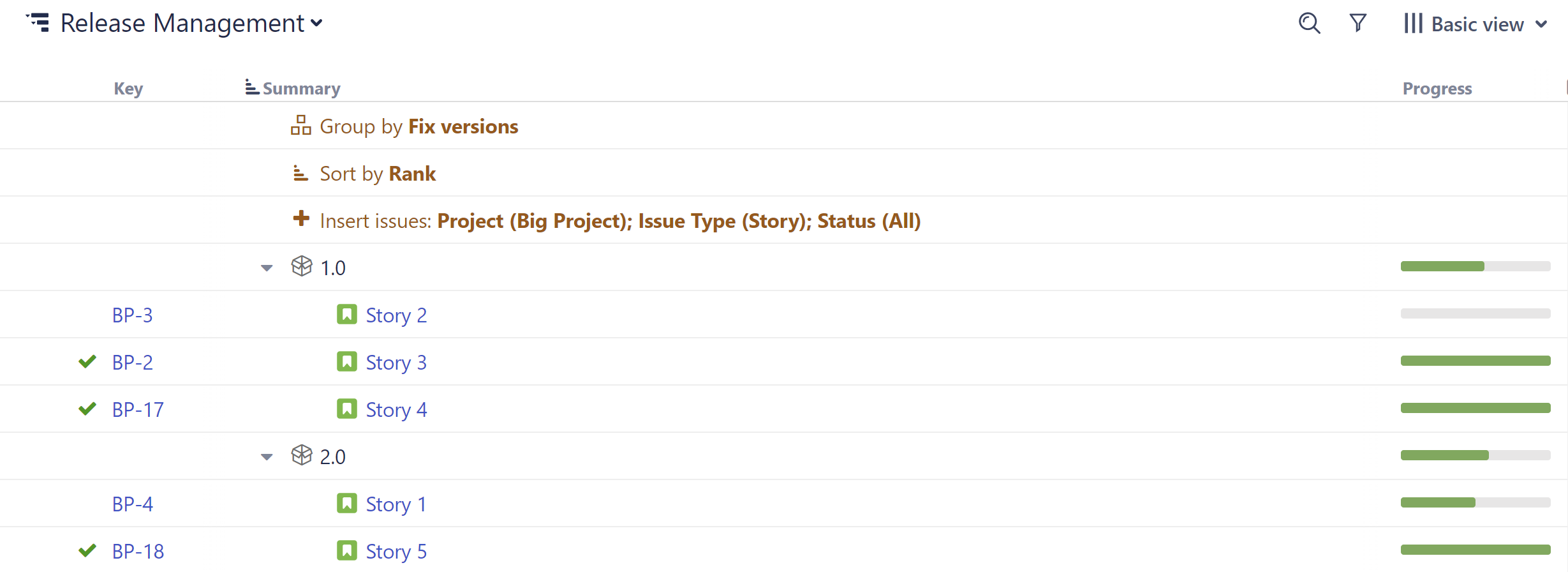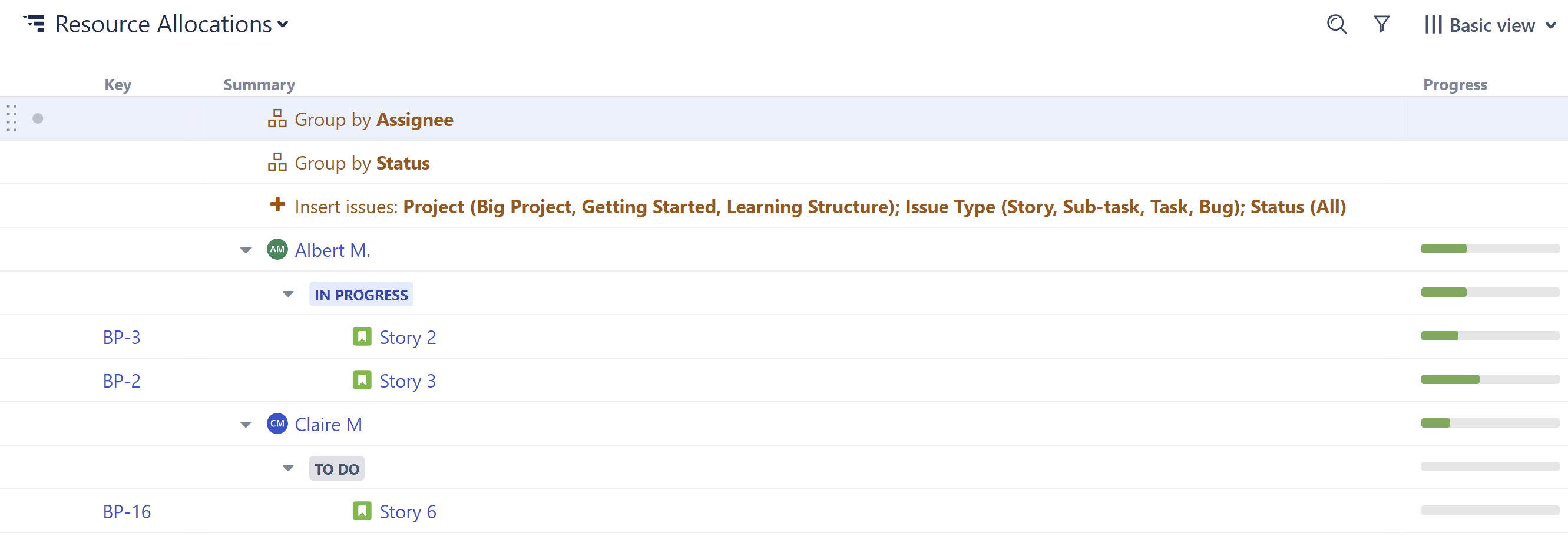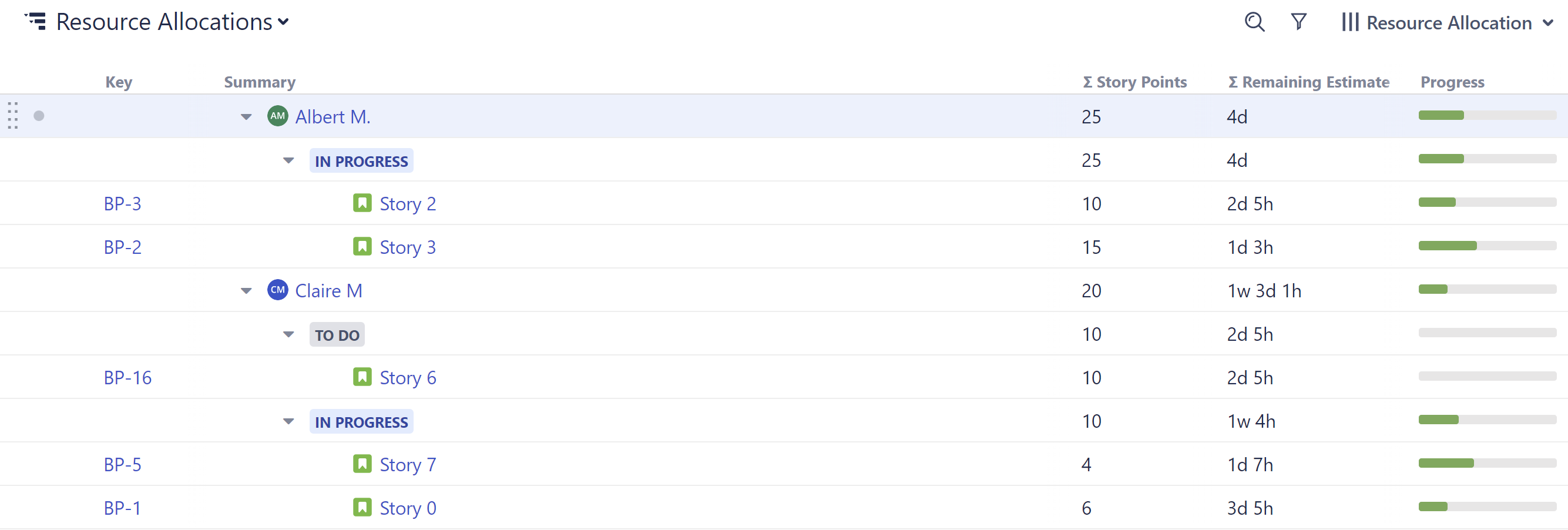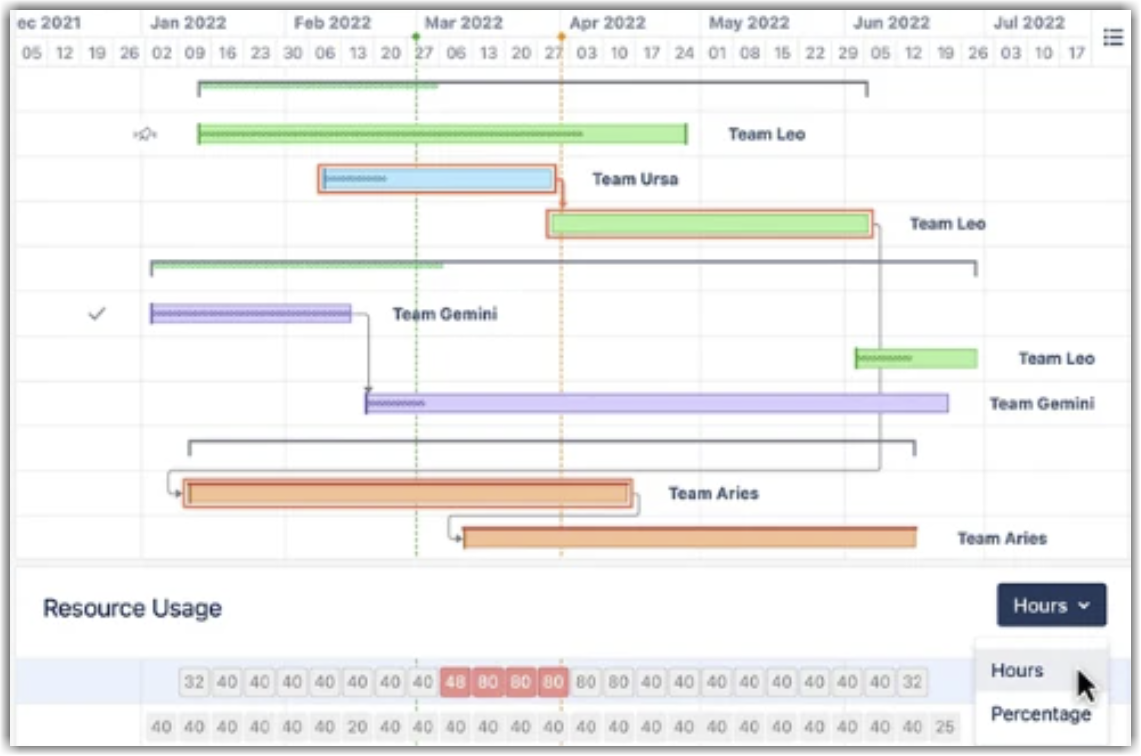Product Owner
With Structure, you can easily create a visual overview of your projects – and visualize all the data you need to track on a single screen.
Step 1: Build Your Structure
To create a new structure:
- Open the Structure Selector menu and select Create New Structure
- Use the +Add menu to add issues and build your hierarchy:
- Use Presets to use one of Structure's preconfigured hierarchies
- Or configuring your own hierarchy using +Add | Insert | Basic Insert, +Add | Group, and +Add | Extend
Step 2: Add Data
- Jira fields, such as status, assignee, sprint, or remaining estimate
- Progress - track status based on issue progress, percent completion, or resolution
- Formulas - create your own formulas to compare fields or create a visual report
Tempo Work Logged - track how long your team is spending on each issue

Once you've added your columns, you can aggregate the data up the structure. To do so, open the column you want to aggregate and select Sum over sub-items.
Looking to visualize your structure data as a chart or other report? Our integration with Custom Charts for Jira makes it easy to build customizable charts from your structure data. Learn more
With Structure, you can track all the issues for upcoming releases – even if they're from different projects – and visualize all the data you need to track on a single screen.
Step 1: Build a Release Management Structure
To create a structure for release management:
- Open the Structure Selector menu and select Create New Structure
- Add the issues you want to track – you can add them manually or automatically using +Add | Insert | Basic Insert
- Group issues by fix version: +Add | Group | Field | select "Fix Version/s"

Want to include epics and stories?
When inserting issues, add epics: +Add | Insert | Basic Insert | open the Issue Types dropdown and select Epic
Add your stories: +Add | Insert | Child Issues | under Add, select Issues under epics and (optional) Sub-tasks.
Step 2: Add Data
- Jira fields, such as status, assignee, sprint, or remaining estimate
- Progress - track status based on issue progress, percent completion, or resolution
- Formulas - create your own formulas to compare fields or create a visual report
Tempo Work Logged - track how long your team is spending on each issue

Once you've added your columns, you can aggregate the data up the structure. To do so, open the column you want to aggregate and select Sum over sub-items.
Looking to manage resources for your next project? Planner makes it easy to plan resources and capacity for your team.
When team members are working on multiple projects, it can be difficult to track how much work everyone is doing. Using Structure, you can track allocation across projects and reassign work on the fly.
Step 1: Build a Resource Allocation Structure
Insert issues from every project/board the team members work on, and then group them by Progress and Assignee.
To create a new structure:
- Open the Structure Selector menu and select Create New Structure
- Add all the issues: +Add | Insert | Basic Insert
- Group issues by Status: +Add | Group | FIeld | select "Status"
- Group issues by Assignee: +Add | Group | Field | select "Assignee"

Step 2: Add Columns to Compare Workloads
Structure columns allow you to visualize multiple data points in a single view. We recommend one or more of these:
- Status
- ∑ Story Points (if you’re using them)
- ∑ Original Estimate
- ∑ Remaining Estimate
- A custom formula to calculate the remaining effort
Using a Totals columns, the values for individual issues are aggregated up to their assignee, so you can evaluate workloads at a glance.

Step 3: Drag Issues to Reassign
To assign/reassign tasks, simply drag issues from one assignee grouping to another.
Optional Enhancements:
- To allocate resources at the group level, group issues by a custom Team field instead of Assignee.
- Add a WSJF column to prioritize issues, and select Sum over sub-items to balance priorities across resources.
- Manage allocation across sprints by adding a Group by Sprint generator. (Haven't assigned sprints yet? Check out Sprint Planning with Structure!)
Try Planner by Tempo to plan resources and capacity for your team.
Adding Structure.Gantt makes it easy to identify and resolve overallocations across projects and portfolios.
With Structure, you can track all the issues for upcoming sprints – even if they're from different projects – and visualize all the data you need to track on a single screen. You can even aggregate that data for each sprint.
Step 1: Build a Sprint Planning Structure
To create a new structure:
- Open the Structure Selector menu and select Create New Structure
- Add issues: +Add | Insert | Basic Insert
- Group issues by fix version: +Add | Group | Field | select "Sprints"

Step 2: Add Data
Next, add the data you'll use to compare issue priority:
- Click the + button at the top-right corner of the structure
- Select the fields or attributes you want to compare - we recommend:
- Status
- Assignee
Epic
- Story Points (if you’re using them)
- WSJF (or any other metric your team uses to prioritize issues or assess business value)
- Click the header of any column to sort your issues by that value.

Step 3: Assign Issues
To assign issues to a sprint, drag it from the backlog to the appropriate sprint. You can also reassign issues by dragging them from one sprint to another.

Optional Enhancements
- Aggregate values for each sprint: when adding a column (such as Story Points), select Sum over sub-items
Group by assignee under each sprint to see how the work is divided across your team: +Add | Group | Field | Assignee
- Use Structure.Gantt to view any blocking dependencies between issues (to help prioritize them)
Tempo's Strategic Portfolio Management solution is a modular approach to help organizations focus their priorities, people, and spend across their portfolio of products and services.
Build your portfolio roadmap in Roadmunk.
Manage your work in Structure:
Link your roadmap plans to existing work or create new work.
Assign the work to teams.
Manage timelines, dependencies, and resource allocations in Structure.Gantt.
Track work in Structure or Jira. As teams work, their progress is automatically updated in Structure.
Update the original roadmap with up-to-date execution data, allowing leadership to make decisions based on real-time information.
Monitor the financial health of your portfolio using Cost Tracker and Structure.
Manage resources and resource allocation with Planner and Structure.Gantt.
Build custom reports to monitor your portfolio with Custom Charts for Jira.
Strategic Portfolio Management with Tempo Apps
